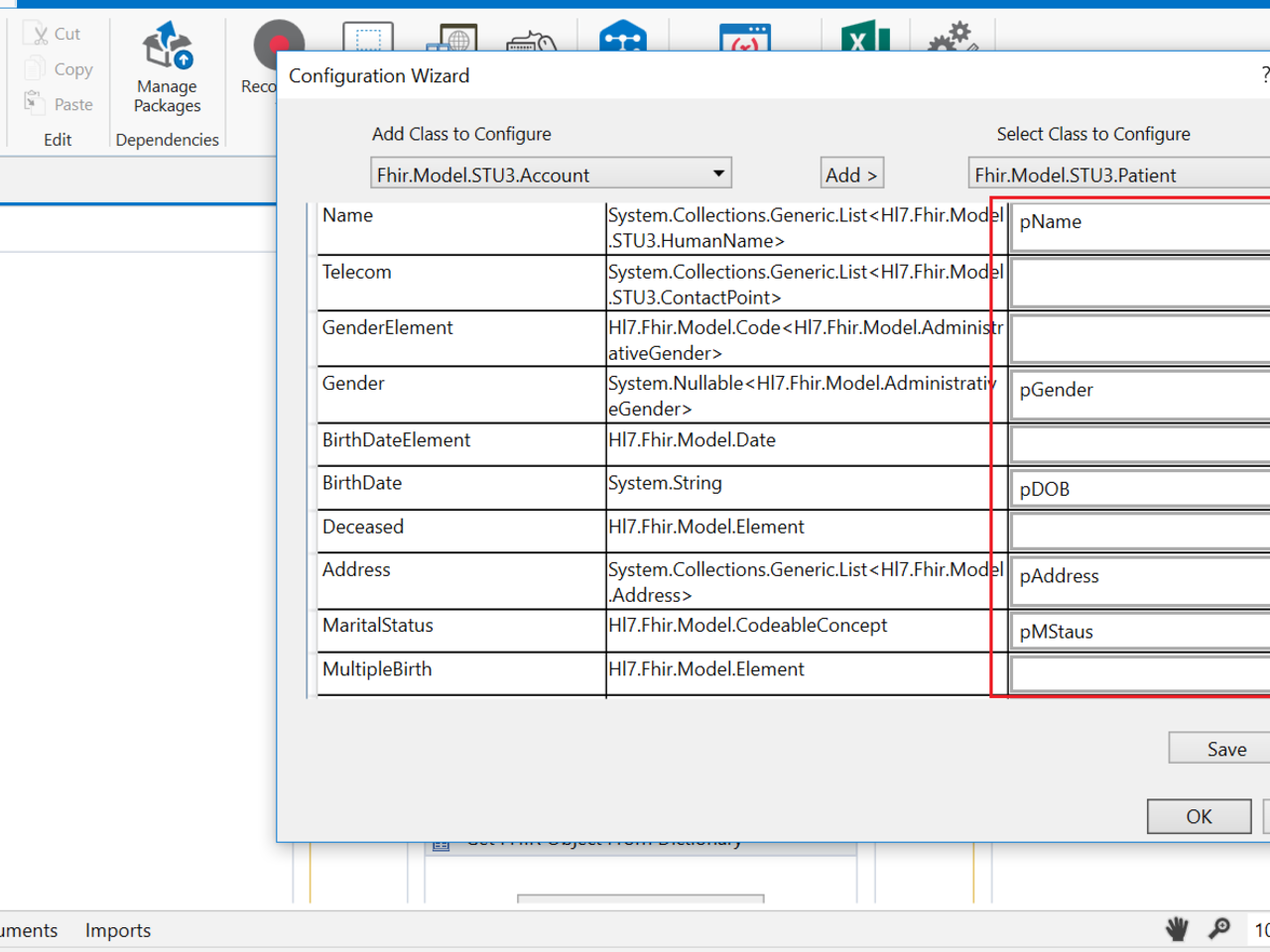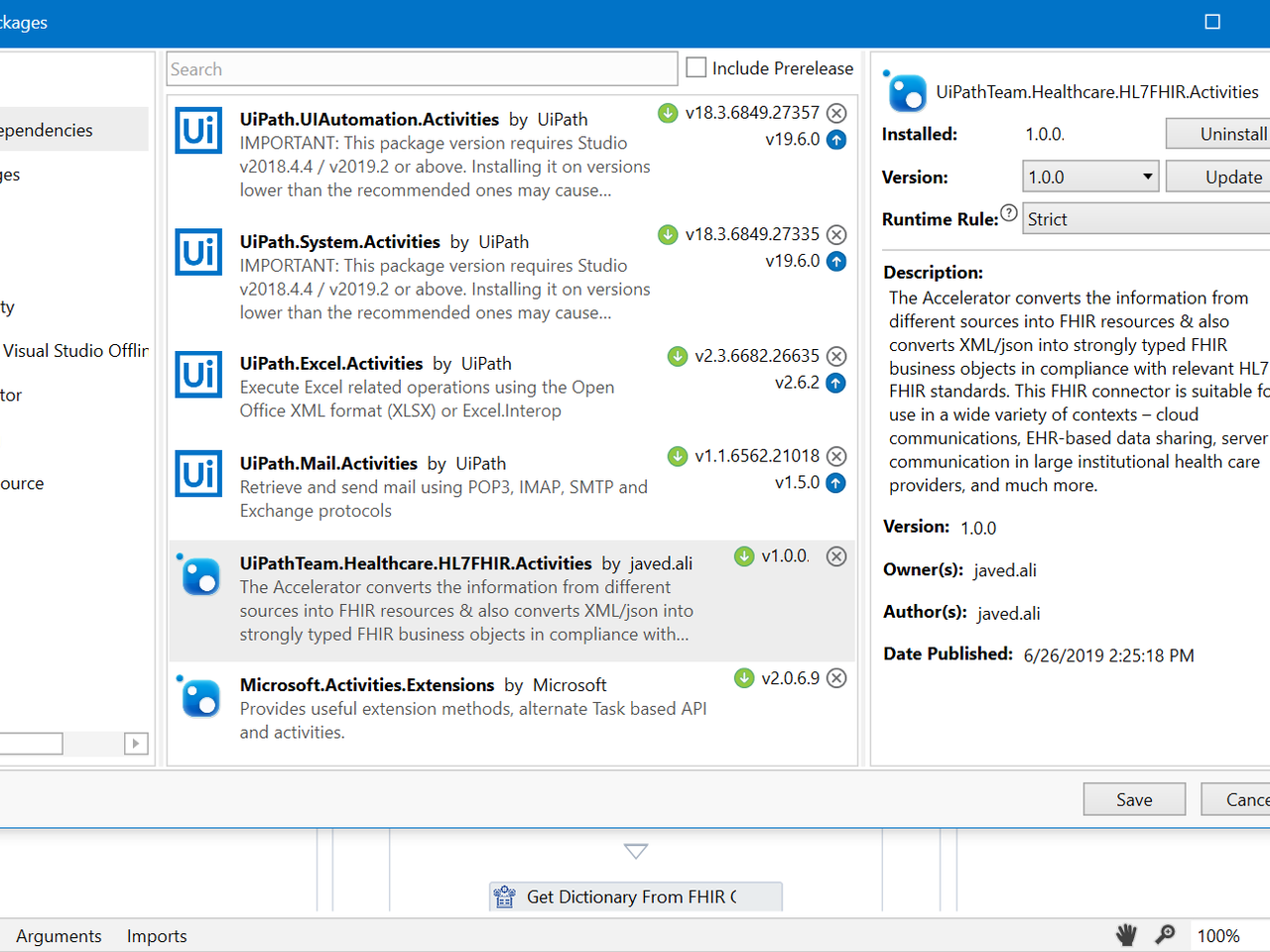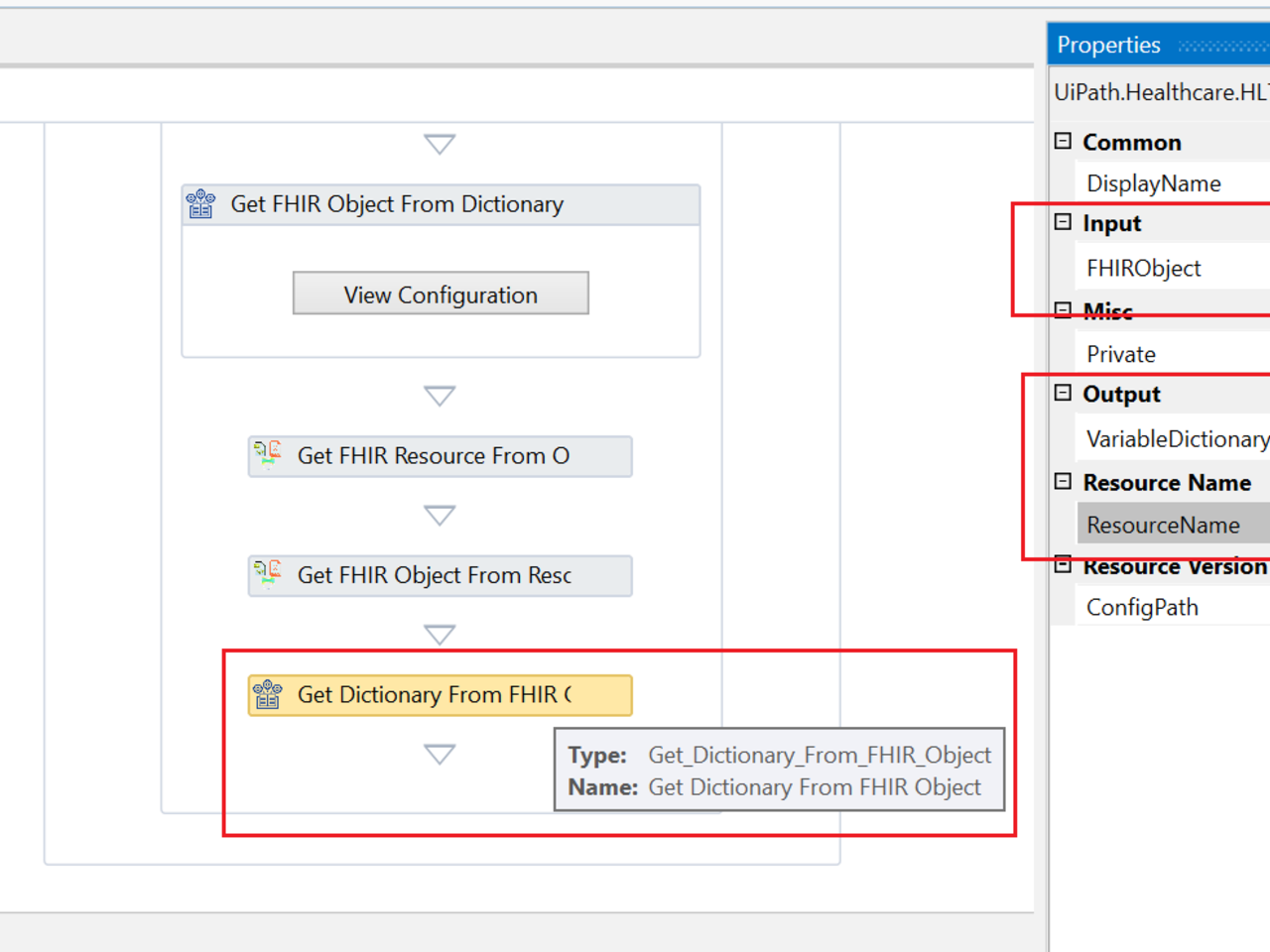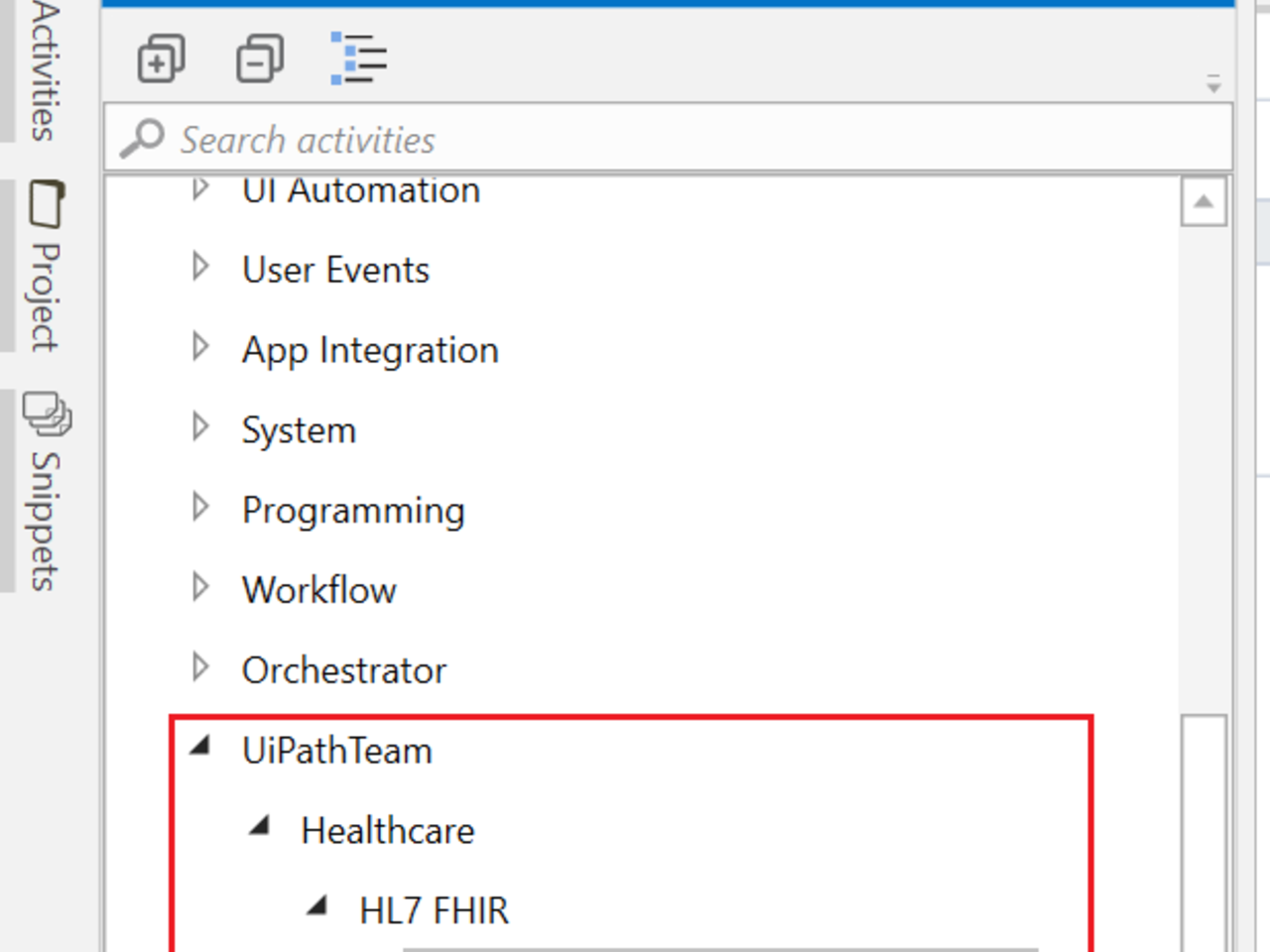Create your first automation in just a few minutes.Try Studio Web →
UiPath HL7 FHIR Connector V2 - Healthcare
by YouTube
0
Activity
<100
Summary
Summary
This FHIR connector is suitable for use in a wide variety of contexts – cloud communications, EHR-based data sharing, server communication in large institutional health care providers, and much more.
Overview
Overview
Fast Healthcare Interoperability Resources (FHIR) is a framework standard that defines a common way to solve healthcare problems and provides a set of data formats and elements (known as resources) and an application programming interface (API) for exchanging electronic health records.
FHIR is relatively new and organizations using HL7 will need to convert to FHIR which could require in-house development costs or the purchasing of a new middle-ware provider in addition to implementation costs.
Currently, health systems with a massive backlog of patient and billing data that needs to be converted to HL7 to be migrated to the new EMR are outsourcing this process.
This accelerator helps RPA Developers in applying HL7 FHIR standard data model for mapping to front-end based automation for different EMR systems. The accelerator increases re-usability and accuracy while reduces effort in defining custom data variables across the transactions. This activity package has used the different HL7 FHIR APIs like Core, Model & Serialization etc. to generate a strongly typed resource business objects by taking resource XML or json file as an input. Strongly typed FHIR business objects are easy to navigate using Intellisense to locate and fetch business information.
Features
Features
A central challenge for healthcare standards is how to handle the wide variability caused by diverse healthcare systems. Over time, more fields and customization are added to the specification, gradually adding cost and complexity to the resulting implementations. The alternative is relying on custom extensions, but these create many implementation problems too. The accelerator benefits are: Eliminates the need for middle-ware APIs for data exchange. Ease of data extraction and conversion into HL7 FHIR standard resources. The UiPath Accelerator may be used to: Exchange data between disparate systems, for example between two different EMR/EHR systems or between a PACS/VNA and an EMR/EHR. The accelerator facilitates the ability of two or more systems or components to exchange and utilize the information. Transfers data to a cloud platform to be used as a managed repository to expose data to patient- and provider-facing apps. Allows for ease of a cloud platform to ingest data and export data into data warehouses, where you can use the data for analysis, machine learning (ML) model training, and many other apps. Integrate decision support software into clinical systems. Support data migration efforts. The ability of two or more legacy EMR systems to navigation and use FHIR business objects to map the data fields between theses EMR systems. Produce reports with information from disparate systems, i.e., the Hospital Information System (HIS) and EMR/EHR.
Additional Information
Additional Information
Dependencies
Newtonsoft.Json >=10.0.3 HL7 FHIR APIs( Hl7.Fhir.Core.dll, Hl7.Fhir.ElementModel.dll, Hl7.Fhir.Serialization, Hl7.Fhir.Support.dll & Hl7.FhirPath.dll)
Code Language
Visual Basic
Runtime
Windows Legacy (.Net Framework 4.6.1)
Technical
Version
1.0.0.1Updated
February 18, 2020Works with
UiPath Studio 2018.3+
Certification
Silver Certified
Tags
Support
UiPath Community Support
Resources



